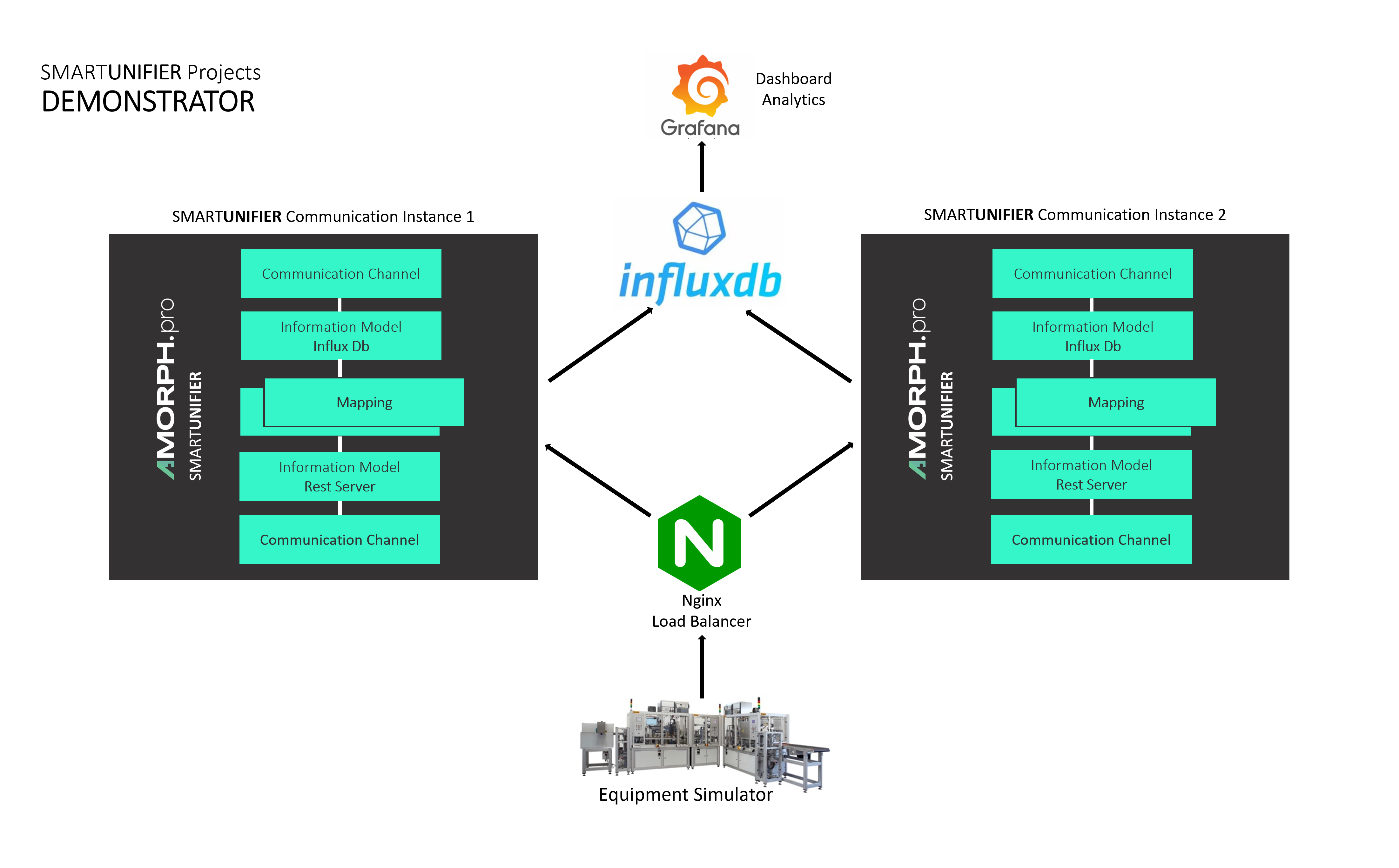What is SMARTUNIFIER High Availability Demonstrator¶
SMARTUNIFIER High Availability Demonstrator is a package that allows users to simulate the connection between a production equipment and an Influx DB, using two Instances with a load balancer.
This illustrates that SMARTUNIFIER is capable to run in a high availability mode, becoming the tool of choice for critical use cases. The package contains all the necessary tools to run a complete communication scenario out of the box.
Benefits of SMARTUNIFIER High Availability Mode¶
Downtime reduction
Performance improvements
Instance update without downtime
Components¶
The Demonstrator package contains the following components:
SMARTUNIFIER Manager – a modern web application to create SMARTUNIFIER Instances that enable the communication between the Rest Server and the Influx DB.
Influx Database - a Docker image containing the Influx Database where the data coming in from the Rest Server will be stored and used to build visualizations.
Grafana - a Docker image containing a preconfigured Grafana application that has a built-in dashboard displaying the key parameters sent by the Rest Server.
Nginx - a Docker image representing the load balancer for the two SMARTUNIFIER Instances.
Send_Data Script - a script that generates random values for two parameters: PRESSURE and TEMPERATURE.
Data Flow Diagram¶

Demonstrator Artefacts Structure¶
The following table shows the SMARTUNIFIER artefacts that are used to create this demo:
Type |
Name |
Description |
|---|---|---|
Information Models |
InfluxDb |
Stores data from the Rest Server on InfluxDb |
RestData |
Represents the Rest Server structure |
|
Communication Channels |
InfluxDBChannel |
Is used to transmit data from the Rest Server to InfluxDb |
RestChannel |
Represent the Rest Server communication protocol |
|
Mappings |
RestToInflux |
Defines when and how to extract data from the Rest Server and store it on the InfluxDb |
Device Types |
RestToInfluxDeviceType |
Represents the template for the SMARTUNIFIER Instance |
Instances |
RestToInfluxInstance_1 |
Represents the configuration for the runnable application |
RestToInfluxInstance_2 |
Simulation Process Flow Diagram¶

SMARTUNIFIER Instance Process Flow Diagram¶
